| Merkava | |
|---|---|

Merkava Mark IV on display at Yad La-Shiryon, Latrun in April 2011.
|
|
| Type | Main battle tank |
| Place of origin | Israel |
| Service history | |
| In service | 1979 – present[1] |
| Used by | Israel Defense Forces |
| Wars | 1982 Lebanon War, South Lebanon conflict, 2006 Lebanon War, First Intifada, Second Intifada, Gaza War, Operation Pillar of Defense, Operation Protective Edge |
| Production history | |
| Designer | MANTAK |
| Manufacturer | MANTAK/IDF Ordnance Corps (assembly) |
| Unit cost | Est. $6 million[2] |
| Produced | Since 1974 |
| Number built | (As of March 2012) Mark I: 250 Mark II: 580 Mark III: 780 Mark IV: 360 (another ~300 on order)[3] |
| Specifications | |
| Weight | 65 tonnes (143,000 pounds) |
| Length | 9.04 m or 29.7 ft (incl. gun barrel) 7.60 m or 24.9 ft (excl. gun barrel) |
| Width | 3.72 m or 12.2 ft (excl. skirts) |
| Height | 2.66 m or 8.7 ft (to turret roof) |
| Crew | 4 (commander, driver, gunner, and loader) |
| Passengers | Maximum 6 passengers[4] |
| Armor | Classified composite/sloped armour modular design. |
Main
armament |
120 mm (4.7 in) MG253 smoothbore gun, capable of firing LAHAT ATGM |
Secondary
armament |
1 × 12.7 mm (0.50 in) MG 2 × 7.62 mm (0.300 in) MG 1 × 60 mm (2.4 in) internal mortar 12 smoke grenades |
| Engine | 1,500 hp (1,119 kW) turbocharged diesel engine |
| Power/weight | 23 hp/tonne |
| Payload capacity | 48 rounds |
| Transmission | Renk RK 325 |
| Suspension | Helical spring |
| Ground clearance | 0.45 m (1.5 ft) |
| Fuel capacity | 1,400 litres |
Operational
range |
500 km (310 mi) |
| Speed | 64 km/h (40 mph) on road 55 km/h (34 mph) off road |
|
||
|
||
It is designed for rapid repair of battle damage, survivability, cost-effectiveness and off-road performance. Following the model of contemporary self-propelled howitzers, the turret assembly is located closer to the rear than in most main battle tanks. With the engine in front, this layout is intended to grant additional protection against a frontal attack, especially for the personnel in the main hull, like the driver. It also creates more space in the rear of the tank that allows increased storage capacity, as well as a rear entrance to the main crew compartment allowing easy access under enemy fire. This allows the tank to be used as a platform for medical disembarkation, a forward command and control station, and an armoured personnel carrier. The rear entrance's clamshell-style doors provide overhead protection when off- and on-loading cargo and personnel.
It was reportedly decided shortly before the beginning of the 2006 Lebanon War that the Merkava line would be discontinued within four years.[5] However, on November 7, 2006, Haaretz reported that an Israeli General staff assessment had ruled of the Merkava Mark IV that "if properly deployed, the tank can provide its crew with better protection than in the past," and deferred the decision on discontinuing the line.[6] On August 16, 2013, Israeli Defense Minister Moshe Ya'alon announced the decision to resume production of the Merkava main battle tank for the IDF Armored Corps.[7][8]
Contents
Development
In 1965, Israel's military establishment began research and development on a domestically-produced tank, the "Sabra"[9] (not to be confused with the later model of the same name now in service). Initially, Britain and Israel collaborated to adapt the United Kingdom's Chieftain tank that had entered British Army service in 1966.[10] However, in 1969, Britain decided not to sell the tank to Israel for political reasons.[11]Israel Tal, who was serving as a brigade commander after the Suez Crisis, restarted plans to produce an Israeli-made tank, drawing on lessons from the 1973 Yom Kippur War, in which Israeli forces were outnumbered by those of the Middle East's Arab nations.[11]
By 1974, initial designs were completed and prototypes were built. After a brief set of trials, work began to retool the Tel HaShomer ordnance depot for full-time development and construction. After the new facilities were completed, the Merkava was announced to the public in the International Defense Review periodical. The first official images of the tank were then released to the American periodical Armed Forces Journal on May 4, 1977. The IDF officially adopted the tank in December 1978. The first Merkava Mk. 1 tanks were supplied to the IDF in April 1979, nearly nine years after the decision to produce the Merkava Mk. 1 tank was taken.
Primary contractors
The lead organization for system integration of the Merkava's main components is Israel Military Industries (IMI). The Israeli Ordnance Corps are responsible for final Merkava assembly. Contributors to the vehicle include:- IMI manufactures the 105 mm and 120 mm main guns and their ammunition;
- Urdan Industries assembles and constructs the hull, drive- and powertrains, and turret assemblies;
- Soltam manufactures the 60 mm internal mortar;
- Elta designs and manufactures the electronic sensors and infrared optics;
- Elbit delivers the ballistics computer and digital fire-control system (FCS);
- Tadiran provides cabin air conditioning, crew cabin intercom and radio equipment;
- El-Op, Elisra and Astronautics implement the optics and laser warning systems;
- Rafael Advanced Defense Systems builds and installs the Rafael Overhead Weapon Station and Trophy active protection system;
- L-3 Communication Combat Propulsion Systems produces licensed copies of Germany's MTU MT883 1500 hp diesel engine powerplant and RENK RK325 transmissions;
- Motorola supplies Tadiran communication encryption systems;
- DuPont supplies the Nomex, ballistic, and fire-retardant materials used by Hagor;
- Russia Military Industries helped to design the KMT-4 & -5 anti-mine rollers and the ABK-3 dozer blade, now built by Urdan;
- FN Herstal supplies 7.62 mm (MAG 58) and 12.7 mm (M2) coaxial and pintle-mounted machine guns;
- Caterpillar assisted with an Israeli-designed track system.
- Bental Industries, a TAT Technologies subsidiary, produced the brushless motors used in the Mark IV's turret and gun control system.[12]
General characteristics
Firepower
The Merkava Mark I and II were armed with a 105 mm M68 gun. The Mark III, Mark III Dor Dalet BAZ kassag, and the Mark IV are armed with an IMI 120 mm smoothbore gun.Each model of the Merkava has two 7.62 machine guns for anti-infantry defense and a 60 mm mortar.
Mobility
The tank's 1,500 horsepower turbocharged diesel engine was designed by MTU and is manufactured under license by L-3 Communication Combat Propulsion Systems (formerly General Dynamics). The Mark IV's top road speed is 64 km/h.[citation needed]Variants
Merkava Mark I
The general design borrows the tracks from the British Centurion tank, which had seen extensive use during the Yom Kippur war.
The Merkava was first used in combat during the 1982 Lebanon War, where Israel deployed 180 units. Although they were a success, the M113 APCs that accompanied them were found to have several defects and were withdrawn. Merkavas were converted into makeshift APCs or armored ambulances by taking out the palleted ammunition racks in storage. Ten soldiers or walking wounded could enter and exit through the rear door.
After the war, many adjustments and additions were noted and designed, the most important being that the 60 mm mortar needed to be installed within the hull and engineered for remote firing—a valuable feature that the Israelis had initially encountered on their Centurion Mk3s with their 2" Mk.III mortar.[14] A shot trap was found beneath the rear of the turret bustle, where a well-placed shot could jam the turret completely. The installation of chain netting to disperse and destroy rocket propelled grenades and anti-tank rockets before impacting the primary armor increased survivability.
Merkava Mark II
Merkava Mark II at Yad La-Shiryon.
The Mark II used the same 105 mm main gun and 7.62 mm machine guns as the Mark I, but the 60 mm mortar was redesigned during construction to be located within the hull and configured for remote firing to remove the need to expose the operator to enemy small-arms fire. An Israeli-designed automatic transmission and increased fuel storage for increased range was installed on all further Mark IIs. Anti-rocket netting was fitted for increased survivability against infantry equipped with anti-tank rockets. Many minor improvements were made to the fire-control system. Updated meteorological sensors, crosswind analyzers, and thermographic optics and image intensifiers gave greater visibility and battlefield awareness.
Incrementally improved versions of the original Mark II were designated, with many of these tanks still in service today:
- Mark IIB, with thermal optics and unspecified updates to the fire control system.
- Mark IIC, with more armor on the top of the turret to improve protection against attack from the air.
- Mark IID, with modular composite armor on the chassis and turret, allowing rapid replacement of damaged armor.
Merkava Mark III
The turret was re-engineered for movement independent of the tank chassis, allowing it to track a target regardless of the tank's movement. Many other improvements were made, including:
- External two-way telephone for secure communications between the tank crew and dismounted infantry,
- Upgraded ammunition storage containers to minimize ammunition cook-off,
- Addition of laser designators,
- Incorporation of the Kasag modular armor system, designed for rapid replacement and repair in the battlefield and for quick upgrading as new designs and sophisticated materials become available,
- Creation of the Mark IIIB, with unspecified armor upgrades.
BAZ System
The 1995 Mark III BAZ (Hebrew acronym for ברק זוהר, Barak Zoher, signifying Shining Lightning[18]) had many improved and additional systems including:- Upgraded fire-control system components, from Electro Optics Industries (EL-OP) and Elbit, provides the tank with the ability to engage moving targets while on the move (an automatic target tracker),
- NBC protection systems,
- Locally developed central air-conditioning system,
- Added improvements in ballistic protection,
- The Mark IIID has removable modular composite armor on the chassis and turret.
Dor-Dalet
The last generation of the Mark III class was the Mark IIID Dor-Dalet (Hebrew: Fourth Generation), which included several components as prototypes to be introduced in the Mark IV.- Upgraded and strengthened tracks (built by Caterpillar, designed in Israel),
- Installation of the R-OWS.
Merkava Mark IV
Merkava Mark IV is first publicly introduced and seen in Yad La-Shiryon during Israeli Independence Day celebrations in 2002.
Merkava Mark IV of the 401st Brigade during a training exercise.
The model has a new fire-control system, the El-Op Knight Mark 4. Removable modular armor, from the Merkava Mark IIID, is used on all sides, including the top and a V-shaped belly armor pack for the underside. This modular system is designed to allow for damaged tanks to be rapidly repaired and returned to the field.
Tank rounds are stored in individual fire-proof canisters, which reduce the chance of cookoffs in a fire inside the tank. The turret is "dry"; no active rounds are stored in it.
Some features, such as hull shaping, exterior non-reflective paints, and shielding for engine heat plumes mixing with air particles to confuse enemy thermal imagers, were carried over from the IAI Lavi program of the Israeli Air Force to make the tank harder to spot by heat sensors and radar.
The Mark IV includes the larger 120 mm main gun of the previous versions, but can fire a wider variety of ammunition, including HEAT and sabot rounds like the APFSDS kinetic energy penetrator, using an electrical semi-automatic revolving magazine for 10 rounds. It also includes a much larger 12.7 mm machine gun for anti-vehicle operations (most commonly used against technicals).[20]
The new fire-control system enables the Merkava to shoot down helicopters such as the Russian Mil Mi-24 and the French Gazelle, both of which are used by Israel's neighbors.[citation needed]
The Mark IV has the Israeli-designed "TSAWS (Tracks, Springs, and Wheels System)" caterpillar track system, called "Mazkom" (Hebrew: מערכת זחלים קפיצים ומרכובים) by troops. This system is designed to endure the harsh basalt rock conditions of Lebanon and the Golan Heights with minimal "track-shedding".
The tank carries the Israeli Elbit Systems BMS (Battle Management System; Hebrew: צי"ד), a centralised system that takes data from tracked units and UAVs in theater, displays it on color screens, and distributes it in encrypted form to all other units equipped with BMS in a given theater.
The Merkava IV has been designed for rapid repair and fast replacement of damaged armour, with the implementation of sections of modular armour that can be easily removed and replaced. It is also designed to be cost-effective in production and maintenance, and as a result its unit cost is lower than for a number of other tanks used by Western armies.
Mk IVm Windbreaker
Combat history
The Merkava was used widely during the 1982 Lebanon War. The tank outperformed Syrian tanks (mostly T-62s) and proved largely immune to anti-tank weapons of the time (the AT-3 Sagger and RPG-7) that were used against it. It was judged to be a significant improvement over Israel's previously most effective main battle tank at that time, the Centurion tank.[22] 34 Merkava tanks were lost during war[23][page needed]In February 2002, a Merkava III was destroyed by a roadside bomb near Netzarim settlement in the Gaza Strip. The tank was lured into intervening in an attack on a settler convoy. The tank went over a heavy mine, which detonated and totally destroyed the tank. Four soldiers were killed in the blast. This was the first heavy tank to be destroyed during the Second Intifada.[24] A second Israeli tank, Merkava II or probably a Merkava III, was destroyed a month later in the same area and a further three soldiers were killed. A third Merkava II or III tank was destroyed near the Kissufim Crossing, when one soldier was killed and two wounded.[25]
During the 2006 Lebanon War, five Merkava tanks were destroyed.[26] Only the minority of the tanks used during the war were Merkava Mark IVs, as by 2006 they had still only entered service in limited numbers. Hezbollah fired over 1,000 anti-tank missiles during the conflict against both tanks and dismounted infantry.[26] Some 45 percent of all tanks and armoured vehicles hit with antitank missiles during the conflict suffered some form of armour penetration.[26] In total, 15 tank crewmen were killed by these ATGM penetrations.[27] The penetrations were caused by tandem warhead missiles. Hezbollah weaponry was believed to include advanced Russian RPG-29 'Vampir', AT-5 'Konkurs', AT-13 'Metis-M', and laser-guided AT-14 'Kornet'[28] HEAT missiles. The IDF reported finding the state-of-the-art Kornet ATGMs on Hezbollah positions in the village of Ghandouriyeh.[29] Several months after the cease-fire, reports have provided detailed photographic evidence that Kornet ATGMs were indeed both in possession of, and used by, Hezbollah in this area.[30][31] Another Merkava IV tank crewman was killed when a tank ran over an improvised explosive device (IED). This tank had additional V-shaped underside armor, limiting casualties to just one of the seven personnel (four crewmen and three infantrymen) on board. In total, five Merkava tanks (two Merkava IIs, one Merkava III, and two Merkava IVs) were destroyed.[26] Of these two Merkava Mark IVs, one was by powerful IEDs, and the other by Russian AT-14 'Kornet' missiles. The Israeli military said that it was satisfied with the Merkava Mark IV's performance, and attributed problems to insufficient training before the war.[32][33] In total, 50 Merkava tanks (predominantly Merkava IIs and IIIs) were damaged, eight of which remained serviceable on the battlefield. 21 tanks suffered armour penetrations (15 from missiles, and 6 from IEDs and anti-tank mines).[26]
After the 2006 war, and as the IDF becomes increasingly involved in unconventional and guerrilla warfare, some analysts say the Merkava is too vulnerable to advanced anti-tank missiles, that in their man-portable types can be fielded by guerrilla warfare opponents.[34][35] Other post-war analysts, including David Eshel, disagree, arguing that reports of losses to Merkavas were overstated and that "summing up the performance of Merkava tanks, especially the latest version Merkava Mark IV, most tank crews agree that, in spite of the losses sustained and some major flaws in tactical conduct, the tank proved its mettle in its first high-saturation combat."[36] On a comparison done by the armor corps newsletter, it was shown that the average number of crewmen killed per tank penetrated was reduced from 2 during the Yom Kippur War to 1.5 during the 1982 Lebanon War to 1 during the 2006 Lebanon War proving how, even in the face of the improvement in anti-tank weaponry, the Merkava Mark IV provides better protection to its crew (although only a limited number of the Israeli tanks used in 2006 were Merkava Mark IVs). The IDF wanted to increase orders of new Merkava Mark IV tanks, and planned to add the Trophy active protection system to Merkava Mark IV tanks, and to increase joint training between crews and Israeli antitank soldiers.[37][38]
In December 2010, Hamas in Gaza fired an AT-14 Kornet anti-tank missile at a Merkava Mark III tank stationed on the Israel-Gaza border near Al-Bureij. It had hitherto not been suspected that Hamas possessed such a sophisticated missile. The missile penetrated the tank's armour, but in this instance it caused no injuries among its crew . As a result of the attack, Israel decided to deploy, along the Gaza border, its first Merkava Mark IV battalion equipped with the Trophy active protection system.[42]
On March 1, 2011, a Merkava MK IV stationed near the Gaza border, equipped with the Trophy active protection system, successfully foiled a missile attack aimed towards it and became the first operational success of the system.[43]
Export
In September 2011, Turkey suspended a 5 billion dollar deal for 1,000 Merkava Mk 3 tanks.[44][dubious ]In May 2012, Israel offered procurement of Merkava IV tanks to the Colombian Army. The sale would include 25–40 tanks at an approximate cost of $6 million each, as well as a number of Namer APCs. With the threat of the expanding Venezuelan military, it would strengthen Colombian armored forces against Venezuelan T-72 tanks.[45][46]
In June 2014, Israel has signed a landmark contract with a foreign government for the sale of its locally- produced flagship Merkava IV main battle tank.[47]
Derivatives
Following the Second Intifada the Israel Defense Forces modified some of their Merkava's to satisfy the needs of urban warfare.Merkava LIC
These are Merkava Mark III BAZ or Mark IV tanks, converted for urban warfare. The LIC designation stands for "Low intensity conflict", underlining its emphasis on counter-insurgency, street-to-street inner-city asymmetrical type warfare of the 21st century.[48]The Merkava is equipped with a turret 12.7 mm caliber coaxial machine gun, which enables the crew to lay down fairly heavy cover fire without using the main gun (which is relatively ineffective against individual enemy combatants). Like the new remote-operated weapon station, the coaxial machine-gun is fired from inside the tank without exposing the crew to small-arms fire and snipers.
The most sensitive areas of a tank, its optics, exhaust ports and ventilators, are all protected by a newly developed high-strength metal mesh, to prevent the possibility of explosives charges being planted there.[48]
Rubber whip pole-markers with LED tips and a driver's rear-facing camera have been installed to improve navigation and maneuverability in an urban environment by day or by night.
Merkava Tankbulance
Some Merkava tanks have been fitted with full medical and ambulance capabilities while retaining their armament (but carrying less ammunition than the standard tank). The cabin area has been converted for carrying injured personnel and has had two stretchers and life support medical station systems added with a full medical team complement to operate under combat conditions with a Merkava battalion. The vehicle has a rear door to facilitate evacuation under fire, and can provide covering fire.The "tankbulance" is not an unarmed ambulance and as such is not protected by the Geneva Conventions provisions regarding ambulances, but it is far less vulnerable to accidental or deliberate fire than an ambulance or armored personnel carrier.
Merkava IFV Namer
Main article: Namer
Namer (Hebrew: leopard, which is also an abbreviation of "Nagmash (APC) Merkava"), is an infantry fighting vehicle based on the Merkava Mark IV chassis. In service since 2008, the vehicle was initially called Nemmera (Hebrew: leopardess), but later renamed to Namer.Namer is equipped with a Samson Remote Controlled Weapon Station (RCWS) armed with either a .50 M2 Browning Heavy Machinegun or a Mk 19 Automatic Grenade Launcher. It also has a 7.62 mm MAG machine gun, 60 mm mortar and smoke grenades. Like Merkava Mark IV, it is optimized for high level of crew survival on the battlefield. The Namer has a three-man crew (commander, driver, and RCWS gunner) and may carry up to nine infantrymen and a stretcher. An ambulance variant can carry two casualties on stretchers and medical equipment.
The Golani Brigade used two Namer IFVs during Cast Lead operation.
Merkava ARV Nemmera
The Merkava Armored Recovery Vehicle initially called Namer (Hebrew: leopard), but subsequently renamed to Nemmera (Hebrew: leopardess). It is an armored recovery vehicle based on a Merkava Mark III or IV chassis. It can tow disabled tanks and carries a complete Merkava back-up power pack that can be changed in the field in under 90 minutes.There are two versions of Nemmera: the heavier equipped with a 42 ton-meter crane and a 35 ton-meter winch, and the smaller equipped with a smaller crane.
Merkava Howitzer Sholef
FMCV
On July 14, 2011, The Jerusalem Post reported that the IDF had begun developing a successor for the Merkava series of tanks. The development was started in part by the arrival of the Trophy active protection system. With the system's ability to intercept threats at a stand-off distance, there was a review of the need for vehicles like the Merkava to have thick, heavy layers of armor.[50] The Merkava Tank Planning Directorate set up a team to study principles for a future tank and present ideas for an armored fighting vehicle to provide mobile firepower on a future battlefield. The team reviewed basic design principles including lessening its weight, armor thickness compared to an APS to intercept anti-tank threats, reducing the crew size, and the type of main gun. Horsepower capabilities and heavy and light track systems compared to a wheeled chassis were also considered. With future battlefield condition developments affecting design features, the vehicle may not be considered a "tank" in the traditional sense.[51] By July 2012, details began to emerge of considerations for developing technologies for the new design. One possibility is the replacement of the traditional main gun with a laser cannon or an electromagnetic pulse cannon. Other improvements could include a hybrid-electric engine and a reduced crew of two. The goals of the new tank are to make it faster, better protected, more interoperable and lethal than the current Merkava.[52]The 65-ton Merkava is not regarded as useful for missions other than conventional warfare. The Israeli Army Armored Corps wants a lighter and highly mobile vehicle for rapid-response and urban warfare situations that can fill multiple roles. In 2012, the Defense Ministry drafted a program for development of a new family of light armored vehicles called Rakiya (Horizon), a Hebrew acronym for Future Manned Combat Vehicle (FMCV). The FMCV is planned to weight 35 tons and have sufficient armor and weapons for both urban and conventional military operations. Instead of one multi-mission chassis, separate vehicles in distinct variants will perform different roles with all vehicles using common components. Vehicles are likely to be wheeled to maneuver in urban environments and move troops and equipment around in built-up areas. While the FMCV will be a fifth-generation vehicle as a follow-on to the Merkava IV, it will not be a replacement for the tank. The Merkava and Namer heavy tracked vehicles will remain in service for decades, while FMCV vehicles are to address entirely different operational requirements. Although the program seems similar to the American Future Combat Systems effort, which failed to produce a family of rapidly deployable lightweight ground vehicles, program officials say they learned from the American experience and that the FMCV was more focused and driven by simpler and more reasonable requirements based on cost considerations. Officials expect requirements for a range of configurations for FMCV light armored vehicles to be approved in 2014 and solicited to Israeli and American companies. The IDF hopes for the FMCV family of vehicles be operational by 2020.[53][54]











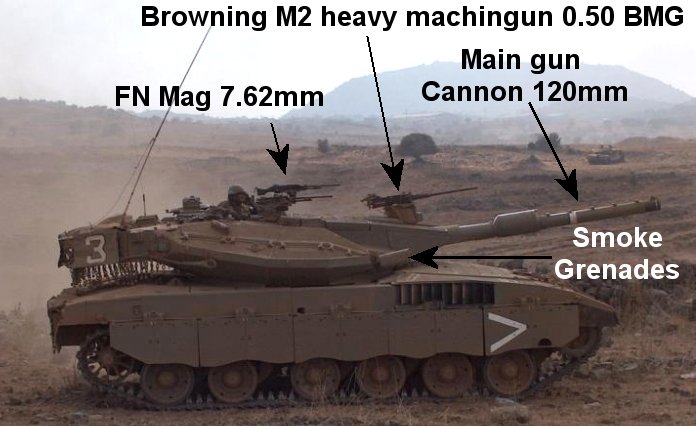
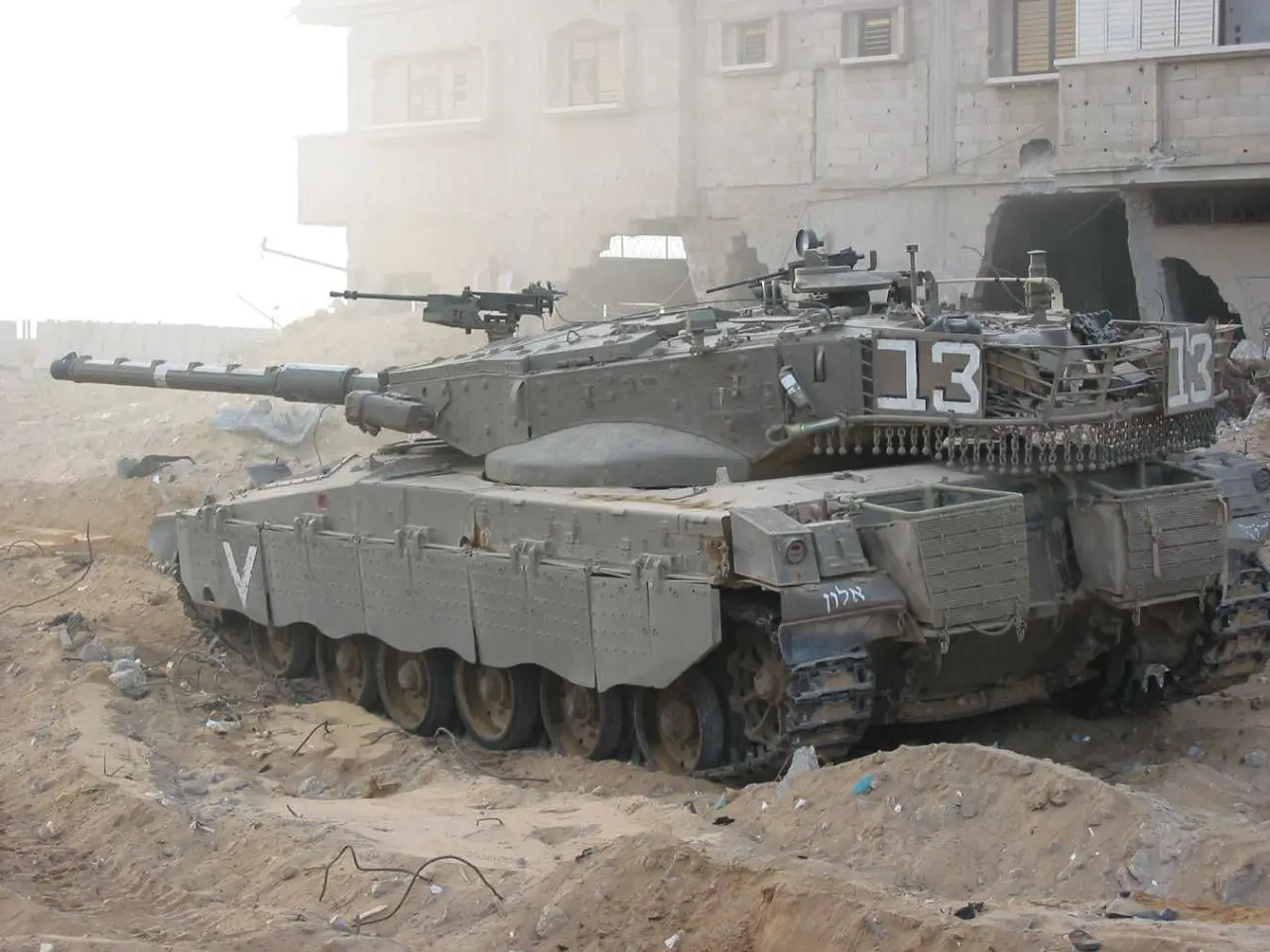

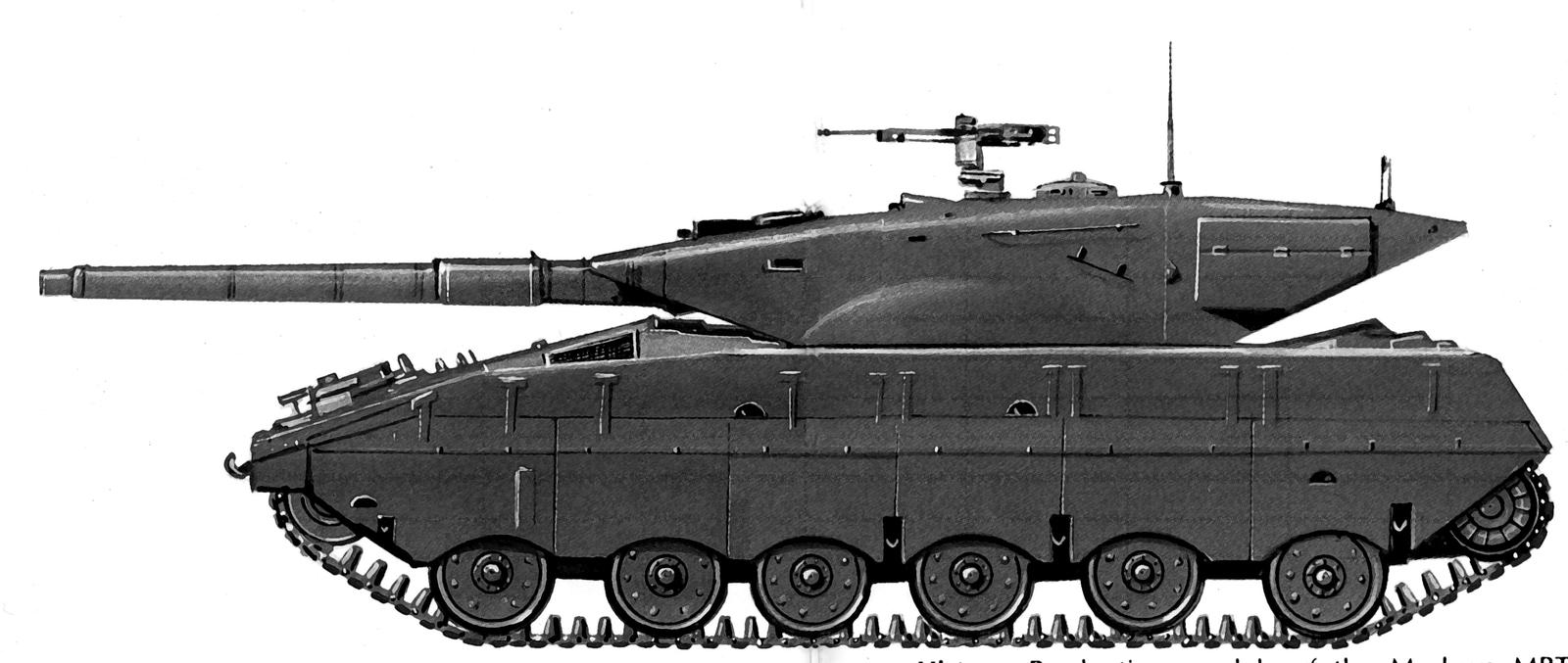


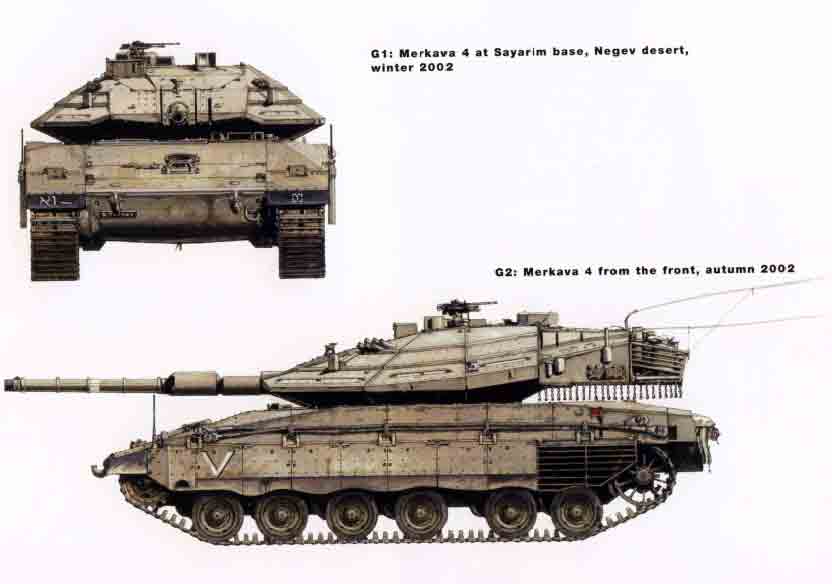


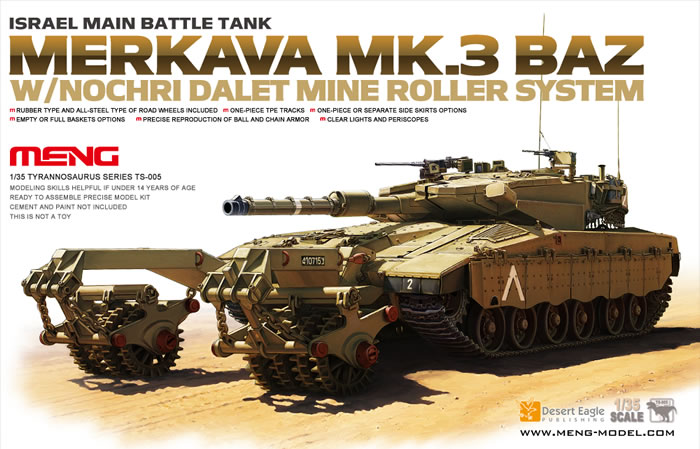



















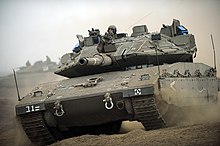


No comments:
Post a Comment